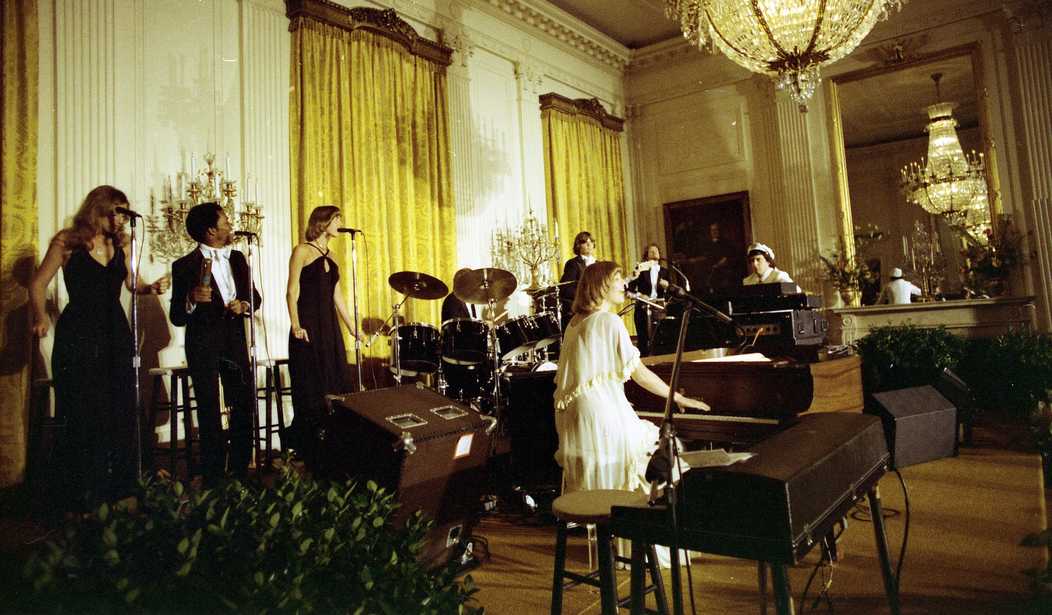I’m a child of the ’70s and ’80s, and I have an affinity for the culture of those decades. And in the midst of my eclectic music tastes, I have a special place in my heart for what the cultural tastemakers call “soft rock.”
Soft rock has been the object of ridicule as well as a guilty pleasure for generations, and a new documentary series tells the story of this amazing style of music. Paramount+ is streaming the documentary series Sometimes When We Touch, and it’s a must-watch for any fan of soft rock.
The first of the three-part series recounts the “Rise” of soft rock. Music began to mellow out in the early ’70s following both the tumult and artistic experimentation of the ’60s. This new strain of rock relied on acoustic guitars and electric piano and melded elements of folk, R&B, country, and even smooth jazz into a blend that perfectly bridged the gap between pop and rock.
The musicians from that era explain that the mellow sound of soft rock wasn’t a breeze to create. “It was hard to write the songs; it was hard to record the songs,” says David Pack of Ambrosia. “Everything about soft rock was hard.”
Guitarist (and defense consultant) Jeff “Skunk” Baxter details how soft rock guitar players built their playing around the vocalists, while Cory Lerios of Pablo Cruise explains the appeal of the Fender Rhodes electric piano. And Pack discusses the smooth vocals and thick harmonies that characterize the genre.
Related: Christine McVie: An Appreciation
Part 1 takes a special look at the Carpenters, the Captain & Tennille, and Ray Parker, Jr. The career trajectories that each of those acts took mirror the rise of the genre as a whole. From Karen Carpenter’s underrated drumming and the Carpenters’ lush multi-tracked harmonies to the Captain & Tenille’s loveless marriage to Parker’s child-prodigy beginnings, the career stories are full of surprises.
The diversity (in a good way) of soft rock, with its variation in musical style, helped add to its appeal. The narrator refers to soft rock as “the sum of all of America’s musical parts.”
And soft rock found a way to even bring jazz into the mix. These artists “found a way to marry this highbrow music with commerciality,” says L.A. Reid.
Just like the middle part of any trilogy, Part 2 tells the tale of the darkest days of soft rock. “Ruin” shows how the rise of punk, new wave, and rap and the birth of MTV helped kill most of the mellow sounds of soft rock, while a new machismo in the ’80s eviscerated the sensitivity that defined the soft rock era.
The growth of music videos meant that, in the words of Rupert Holmes (who admitted to never having had a piña colada in his life), “Music became about survival of the photogenic.” Soft rock became something to mock — even as the decade had its share of hit ballads.
“Critics treated [soft rock] like some kind of disease,” intones the narrator at one point. Both the hip and the snobbish hated those mellow sounds. What was mainstream wasn’t cool, and what was edgy was never “soft.”
In the ’80s and early ’90s, mellow music transformed from soft rock to adult contemporary, an over-produced, schmaltzy sound that bore no resemblance to rock.
Related: Remembering Olivia Newton-John: Singer, Actress, and My Boyhood Crush
Part three looks at the “Resurrection” of soft rock, beginning with how the advent of sampling in early rap records led to the resurgence of soft rock. The controversy that surrounded sampling brought these artists back into the spotlight — initially by complaining about sampling and suing for payment and credit. But one song, Warren G and Nate Dogg’s “Regulate,” which sampled Michael McDonald’s “I Keep Forgettin’,” helped hip-hop stars realize that the smooth sounds of soft rock made the perfect bed on which to lay rhymes.
Label executives saw the value in the blending of hip-hop and mellow rock as well. “I always felt like the outsider with hip-hop, and all of a sudden I was invited to the party because music that I knew was now being sampled into hip-hop,” Reid admits in the documentary.
Another element of pop culture brought soft rock into the spotlight. Many movies and TV shows in the ’90s relied on the mellow sounds of the ’70s and early ’80s for a sense of irony. Making fun of soft rock led to genuine respect for the sounds and sensitivity of the genre. The “we’re all in this together” mentality after 9/11 helped endear people to the enduring power of soft rock as well.
The emergence of the “Yacht Rock” movement in the 21st century helped added to the demand for a soft rock resurgence. The web comedy series Yacht Rock led to a slew of tribute bands, which created a monstrous phenomenon. Irony and comedy led to a true appreciation for good music.
“I think that yacht rock became such a phenomenon because everyone you knew, we were supposed to make fun of this music, but then when you listen to it — ‘No way, what’s happening? I’m kind of enjoying this,'” says NPR’s Ann Powers.
“This is like a movement,” says Peter Beckett of the band Player (you know, “Baby Come Back“) of the “Yacht Rock” revival.
The “hipper-than-thou” music critics, in the words of legendary journalist Ben Fong-Torres, made fun of the middle-of-the-road stuff, and you can still see the disdain dripping from some of the cultural critics like Matt Pinfield and some people I’ve never heard of named John DeVore and Anthony Fantano throughout the series.
As John Ondrasik from Five for Fighting puts it, “I sympathize with some of these great writers who achieved the pinnacle of their careers just to be ridiculed by some of these folks in the press.”
But the artists who show up prominently in Sometimes When We Touch but fall outside the purview of soft rock — like Sheryl Crow, Darryl “DMC” McDaniels, Big Boi, and Susanna Hoffs of the Bangles (who looks so amazing these days) — love and appreciate the music for the art that it is.
“You can say, ‘That’s a piece of crap. I hate that bubble gum music,’ but guess what: you sing it in the car by yourself,” says Les Garland, co-founder of MTV and VH1.
“It’s f***in’ just good f***in’ music,” says McDaniels in Part 1. “Stop f***in’ labeling it!”
You said it, DMC. I might not have phrased it quite that way, but he hit the nail on the head. If you’re a fan of the music, you’ll love Sometimes When We Touch.










Join the conversation as a VIP Member